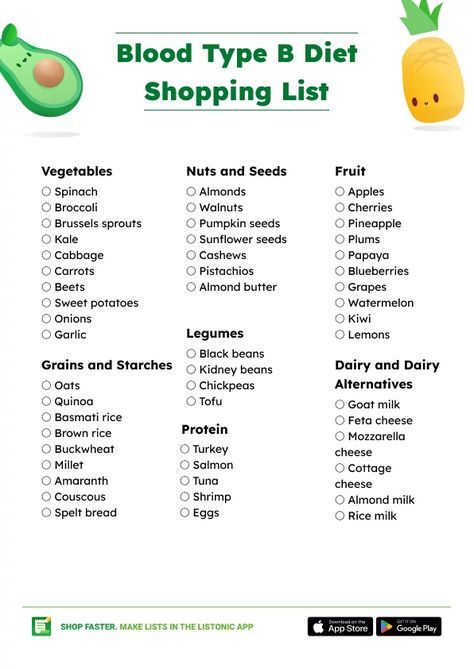Apply Now
Effective Ways to Explore Major Food Groups in 2025
Understanding Major Food Categories
Exploring major food groups is integral to maintaining a balanced diet and understanding nutritional categories. In 2025, the focus on food pyramid guidelines is crucial as they categorize essential nutrients into carbohydrates, proteins, and fats, crucial for energy and bodily functions. Additionally, this understanding paves the way for mindful eating habits, enabling individuals to make informed dietary choices that cater to their lifestyle, whether they prefer vegetarian, vegan, or omnivorous diets.
Adhering to dietary guidelines involves recognizing food group classifications, such as dairy products, fruits, vegetables, grains, legumes, meats, and seafood. These categories not only reflect the diversity in our diets but also play a substantial role in obesity prevention and chronic disease management. By prioritizing nutrient-dense foods and understanding the nutritional value of each group, individuals can optimize energy balance and nutritional intake.
Healthy eating promotes a balance between macronutrients—carbohydrates, proteins, and fats—and micronutrients, including vitamins and minerals. For example, embracing whole foods over processed foods can significantly impact overall health, steering clear of junk food that is often high in sugars and unhealthy fats. This discussion sets the stage for the importance of meal planning and portion control.
The Importance of Meal Planning and Portion Control
Effective meal planning involves strategizing on how to incorporate a variety of food groups into our daily diet. Portion control is vital, as it helps manage caloric intake and aligns with dietary restrictions, ensuring that individuals meet their nutrient requirements without exceeding caloric needs. Understanding food portion sizes assists in maintaining an ideal weight and promotes energy balance.
In 2025, utilizing food labels for nutritional value can help individuals make better choices regarding nutrient quality. For instance, examining sodium levels, sugar intake, and total calories provides a clearer picture of what is being consumed. Choosing heart-healthy foods like those found in the Mediterranean diet can further enhance meal diversity and offer various health benefits, including supporting cardiovascular health.
As we delve into food categories, it’s beneficial to recognize common protein sources that are not only effective but also align with individual dietary preferences. Incorporating meat alternatives, such as legumes and plant-based proteins, supports varied eating patterns conducive to weight management and healthy eating.
Exploring Nutritional Value of Different Food Categories
Fruits and Vegetables: The Powerhouses of Nutrition
Fruits and vegetables are essential components of a balanced diet, providing a rich source of vitamins, minerals, and dietary fiber. Their health benefits are numerous, from boosting the immune system to aiding in digestion and reducing the risk of chronic diseases. In 2025, the emphasis on fiber-rich foods will continue, focusing on how these nutrients promote satiety and help control sugar levels.
The diverse flavor profiles and culinary arts promote creative ways to incorporate fruits and vegetables into daily meals. By embracing seasonal and local produce, individuals can explore cross-cultural foods that enhance food sustainability while mitigating food waste reduction. Experimenting with cooking methods, such as steaming or grilling, can retain nutrient density and improve overall food quality.
Additionally, understanding the role of micronutrients in these categories clarifies their contributions to health, leading to informed dietary choices. The correlation between increased fruit and vegetable intake and reduced health risks will be a focal point in many public health discussions.
Grains and Legumes: Staple Components of a Healthy Diet
Grains, particularly whole grains, and legumes offer significant health benefits, including providing essential carbohydrates that fuel daily activities. In 2025, there will be an increase in awareness regarding the importance of selecting whole grains over refined grains to enhance dietary fiber intake and support digestive health.
Legumes are particularly potent protein sources, highly valued in vegetarian and vegan diets. Incorporating beans, lentils, and chickpeas not only boosts protein intake but also contributes essential minerals and vitamins, enhancing meal composition and addressing nutrient absorption.
The integration of diverse grains and legumes into meal frequencies can promote culinary traditions and provide varied meals that cater to different cultural practices. Mindful eating patterns can be enriched with whole food preparations while minimizing processed food consumption, thus improving the overall nutritional landscape of a meal plan.
Healthy Fats vs. Unhealthy Fats in Meal Composition
Identifying Healthy and Unhealthy Fats
In 2025, understanding the types of fats and their implications on health will be paramount as individuals navigate their dietary choices. Healthy fats, such as those found in nuts, seeds, avocados, and olive oil, are crucial for optimal nutrient absorption and energy. They play a significant role in heart health, providing a contrast to unhealthy fats predominantly found in processed foods and junk food.
Familiarizing oneself with the distinctions between saturated fats, trans fats, and healthy fats will enable better decision-making regarding fat consumption. Nutrition education focusing on the health risks associated with excessive consumption of unhealthy fats will continue to be emphasized, leading to greater consumer awareness regarding food labeling and nutrition facts.
Incorporating heart-healthy foods in various dishes while monitoring fat intake can lead to better health outcomes and enhanced meal satisfaction. Ultimately, this fosters an understanding of how food choices impact overall health, leading to improved lifestyle choices in dietary habits.
Meal Frequency and Timing: Key Aspects of Healthy Eating Habits
Understanding meal frequency can significantly influence metabolic rates and energy levels throughout the day. Evidence suggests that regular meal timing, incorporating adequate nutrients from all food categories, fosters better eating patterns and promotes sated feelings. In 2025, the exploration of different meal frequency strategies, such as intermittent fasting, may gain traction, being evaluated through the lens of nutrient timing and metabolic efficiency.
Experimenting with the timing of meals can also enhance the body's biochemical metabolism and optimize nutrient absorption. Insights into how the body reacts to different meal frequencies can guide individuals in shaping their dietary choices towards achieving healthful, sustained energy levels.
This discussion naturally leads to the practice of calorie tracking, which allows individuals to align their intake with specific dietary goals, focusing on balanced nutrition tailored to personal preferences, health conditions, and lifestyle needs.
Food Labeling: Navigating Nutritional Content
Understanding Food Labels for Informed Choices
Deciphering food labels is a fundamental skill for making informed dietary choices. In 2025, as consumers seek greater transparency about their food sources, the focus on understanding nutritional value will be paramount. Familiarity with essential components found on labels, such as calories, nutritional content, and portion sizes, will empower individuals to select healthier options and enhance meal variety.
Consumers can benefit from guidelines on reading food labels effectively, which can mitigate health risks associated with chronic diseases. This skill also aids in recognizing the significance of dietary fiber, sodium levels, and sugars present in foods, which is essential for informed dietary choices.
Moreover, developing a keen eye for food quality can improve overall health outcomes. Nutritional education initiatives aimed at enhancing consumer knowledge regarding food quality and safety will continue, thereby fostering healthier eating habits amidst a landscape of processed foods.
Implementing Nutritional Education in Daily Life
To promote effective dietary practices, nutritional education should be implemented in daily life as a cornerstone of healthy eating habits. Skills acquired through education can shape individuals’ food choices and influence their food consumption behavior. This is crucial in addressing public health concerns, such as obesity and dietary-related chronic diseases.
Strategies that incorporate cooking methods, meal prepping strategies, and healthy recipes can support individuals in making informed decisions about their meal planning. Highlighting the benefits of nutrient-dense foods in dietary education fosters a culture of mindfulness in eating, encouraging better food pairing and flavor profiles.
Tailoring nutritional education to reflect local food movements and culturally-sensitive practices can resonate more with diverse populations, enhancing engagement. In turn, individuals will feel empowered to embrace healthier dietary choices while contributing to broader humanitarian and environmental goals.

 Its part of generated content. Can i generate another part?
Its part of generated content. Can i generate another part?

 Its part of generated content. Can i generate another part?
Its part of generated content. Can i generate another part? 